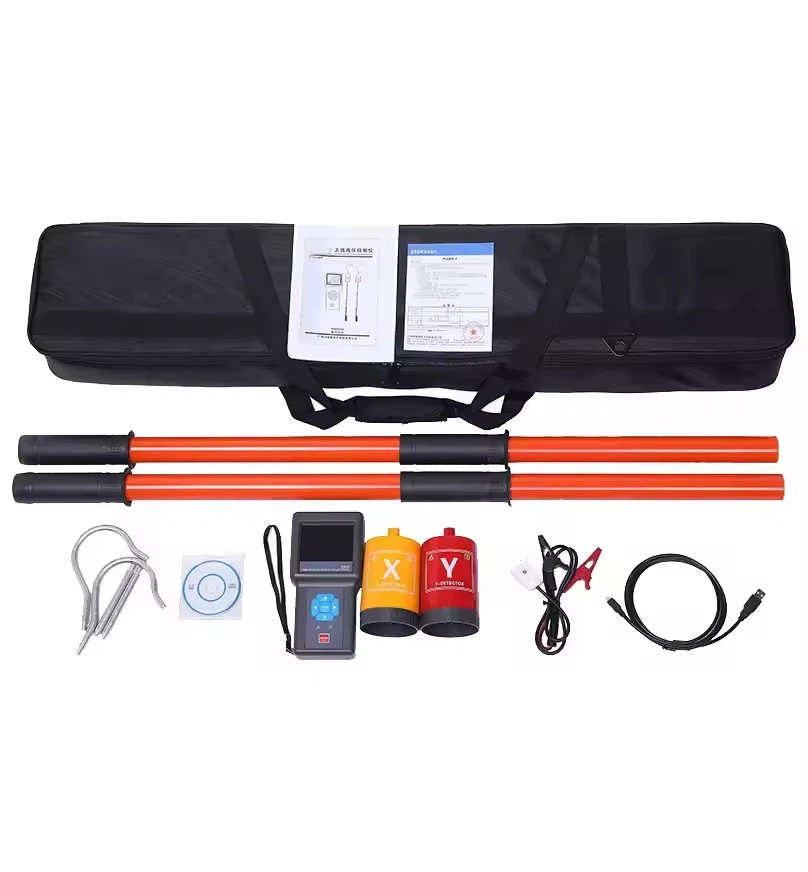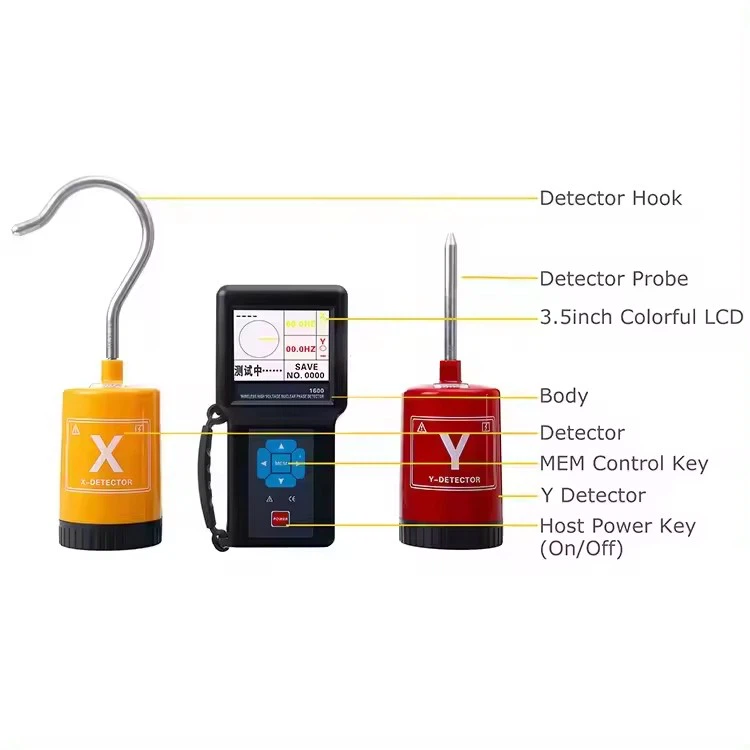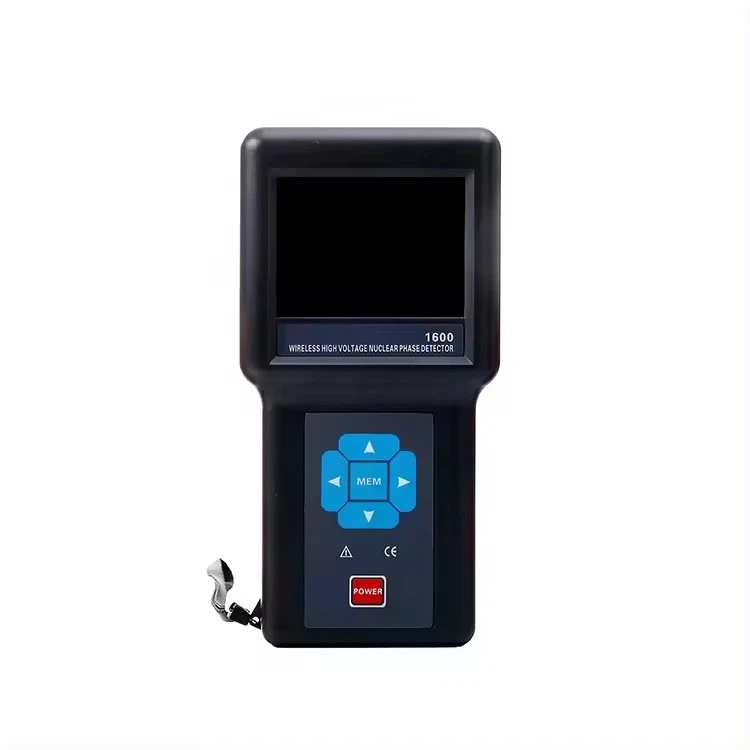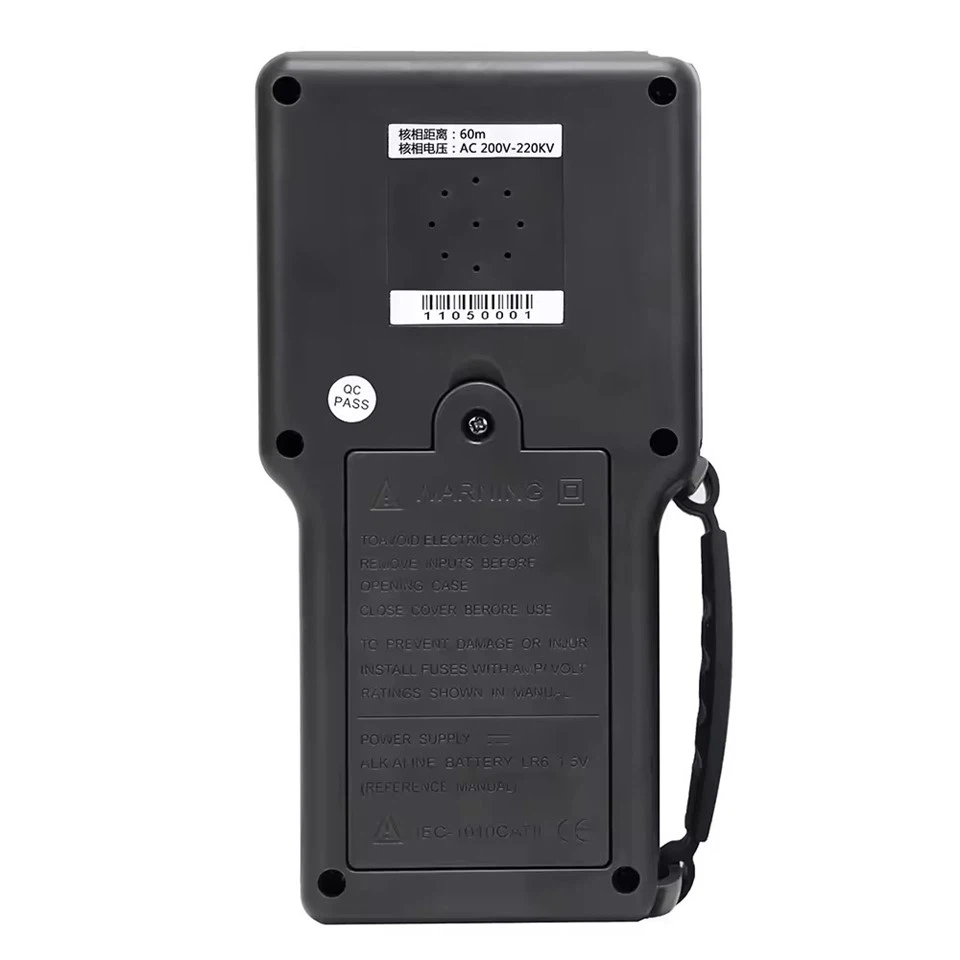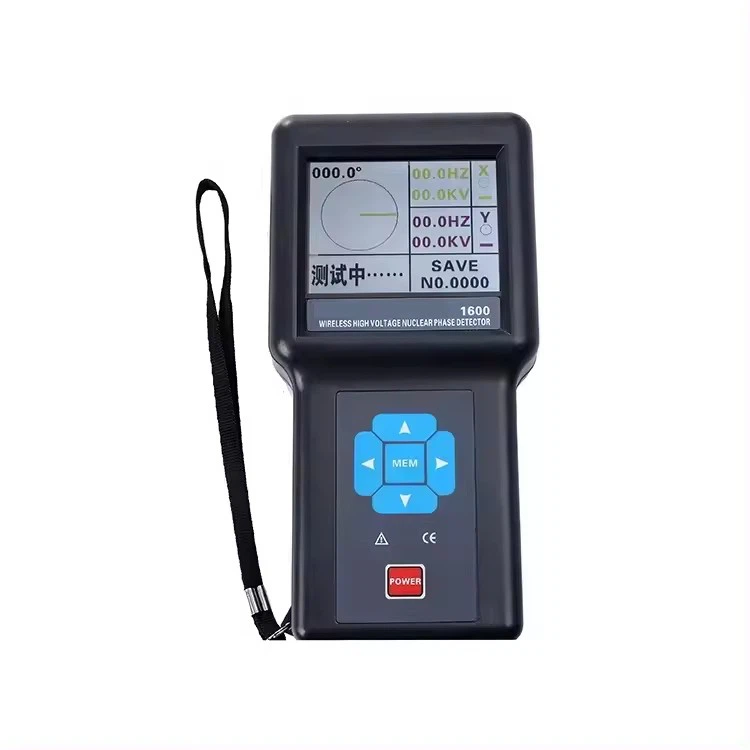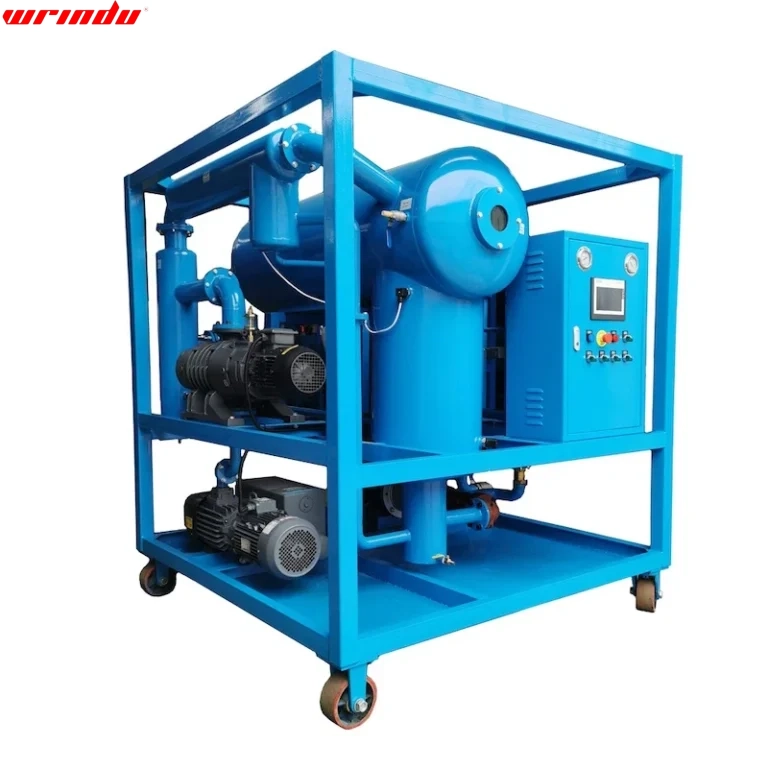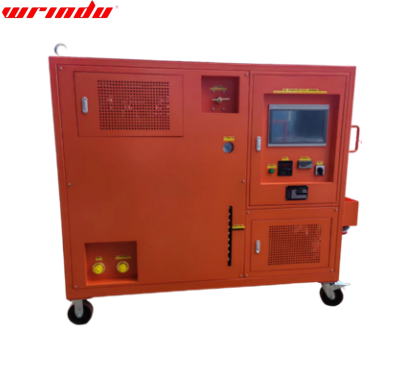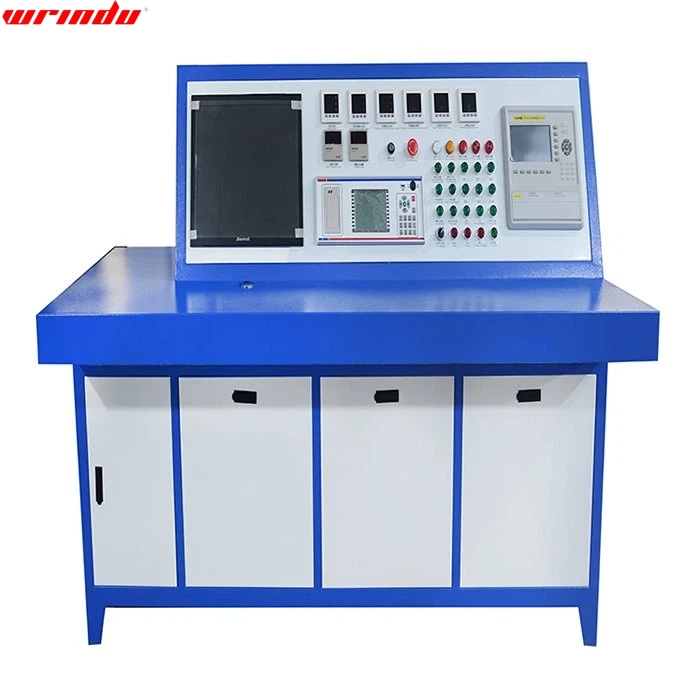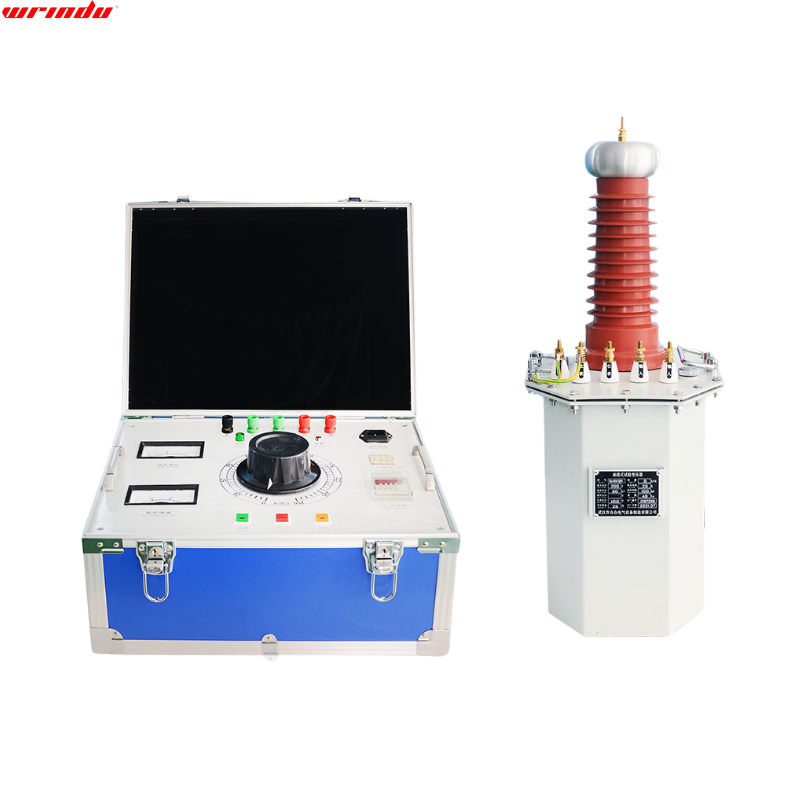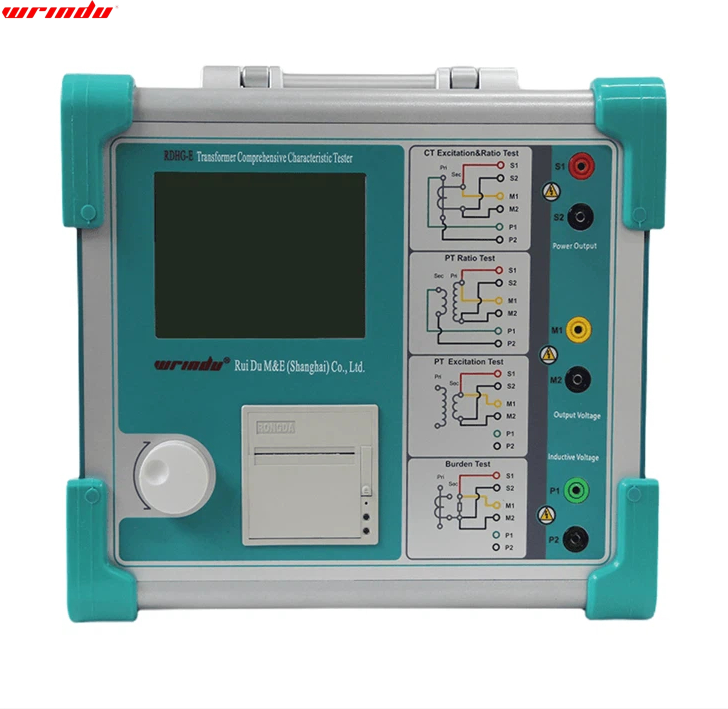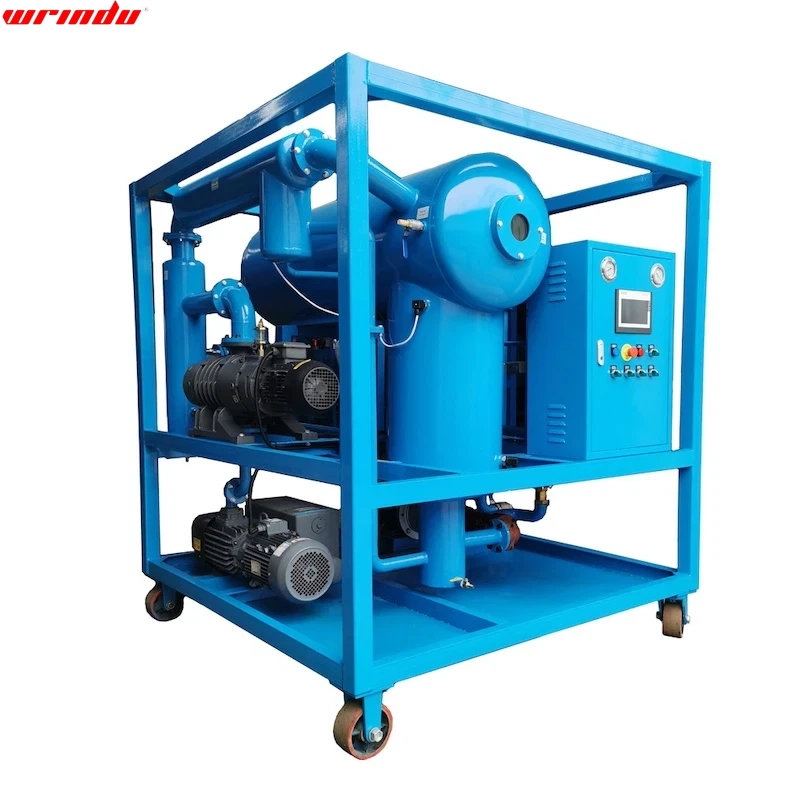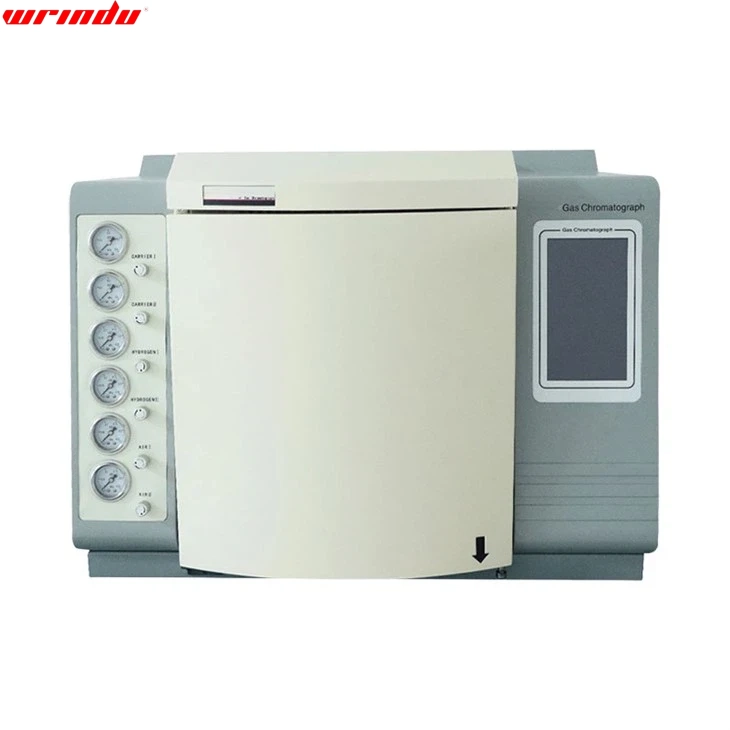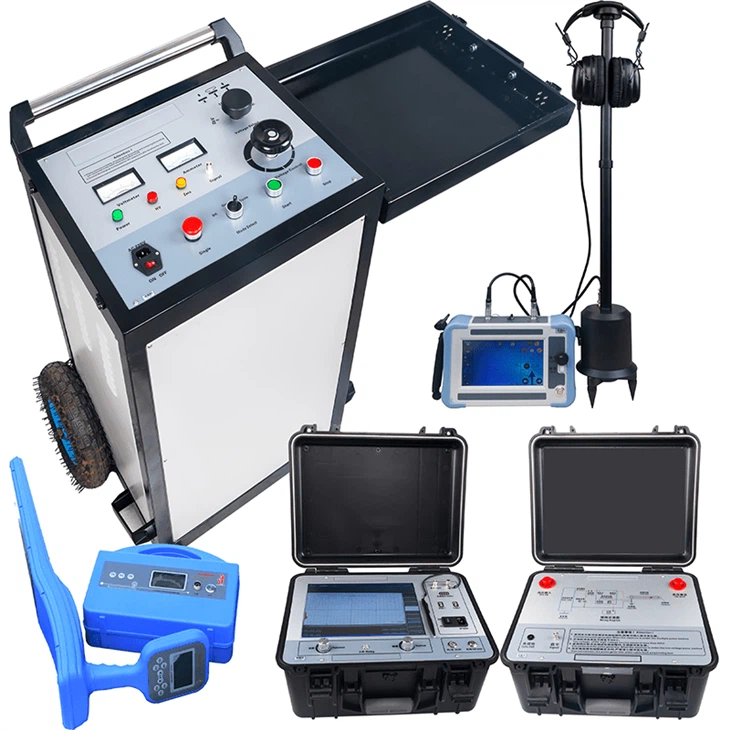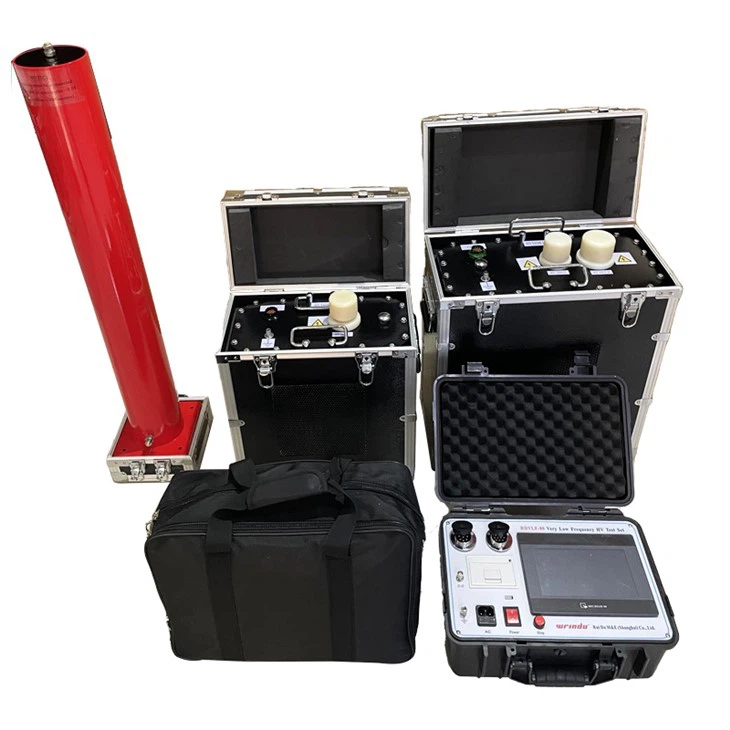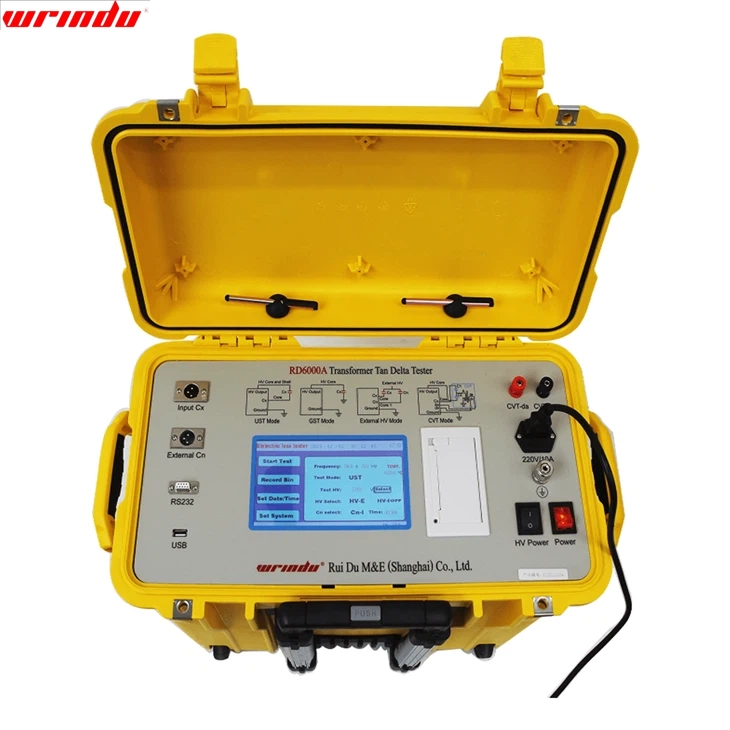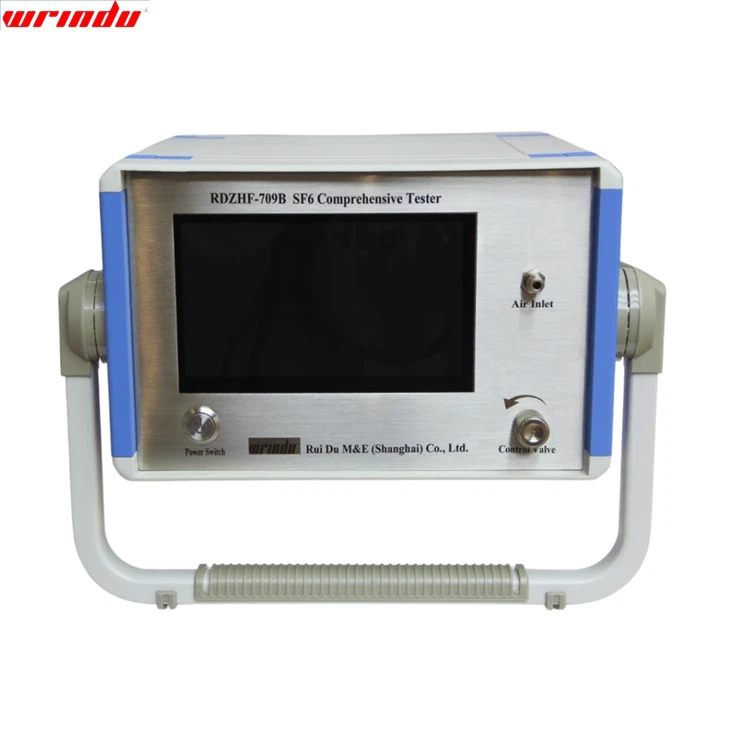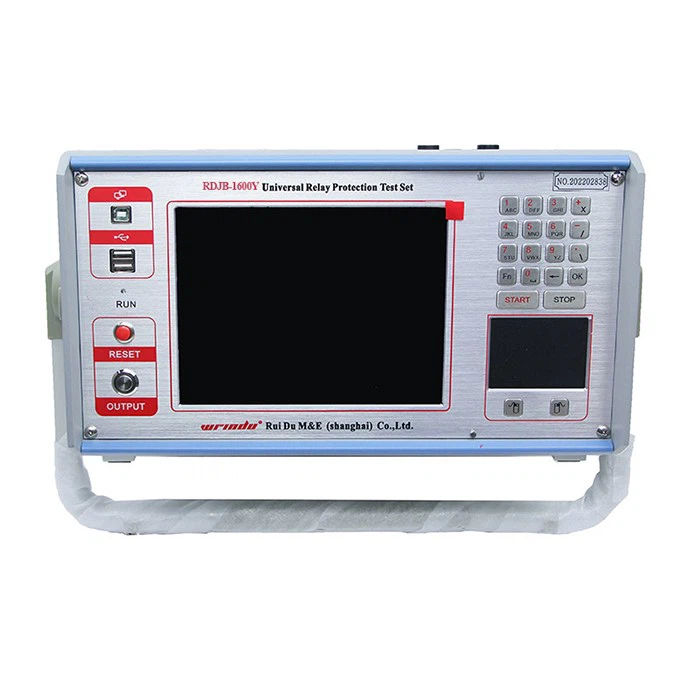OVERVIEW
The TAG8000 wireless phase – failure detector strictly adheres to national standards like GB13398 – 92 and DL/T 971 – 2017 in the power industry, and complies with IEC international standards. It is specially designed for the phase detection of high-voltage lines and switch cabinets. Its phase – detection voltage range is AC 10V – 500kV, phase range is 0° – 360° with an accuracy of ≤±8°, and frequency range is 45.0Hz – 65.0Hz with an accuracy of ≤±2Hz, breaking through the voltage limit of traditional phase detectors and reducing equipment acquisition costs.
The wireless phase failure detector adopts 433MHz wireless transmission, and the phase detection distance in open areas is up to 200 meters. Unique accessories test non-contact phase detection of lines above 110kV and ring network cabinets. The 3.5-inch actual color screen displays multiple data points simultaneously, and the vector diagram and digital indication are intuitive and straightforward, with professional voice prompts. In addition, it integrates power detection and voltage display functions and can store 200 sets of data and upload them via USB.
CHARACTERISTIC
1. Advanced wireless transmission technology enables a phase – checking distance of up to 200 meters, ensuring convenient and accurate operation.
2. Voice prompt: Provides real-time voice feedback, such as “X signal normal, Y signal normal, same phase, different phase”, which is convenient for quick judgment.
3. The 3.5 – inch LCD color screen of the wireless phase – failure detector can simultaneously display the phase, frequency, phase sequence, and phase – check results, and the dynamic vector diagram is clear and intuitive for easy viewing.
4. Electricity test function: The electricity test function can display the voltage level in real time to ensure safe use.
5. Data storage and upload: It supports the storage of 200 sets of test data and is equipped with a USB interface to facilitate uploading data to a computer for saving or printing.
For more information about cable fault tester, please click More.
To request the latest quotes, please click Contact Us.
FAQ
Q:How do you detect phase failure?
A:Phase failure in a three – phase supply can be identified by measuring the Root Mean Square (RMS) voltage of each phase. When the RMS voltage of any phase is 0, it indicates a phase loss. Alternatively, phase failure can be detected by monitoring the zero-crossings of each phase using a Zero-Crossing Detector (ZCD) peripheral.
Q:What is a phase failure alarm?
A:A phase – failure alarm typically involves a Phase Failure Relay, which is a control and monitoring device designed to detect issues in a three – phase supply. However, some can be used in single-phase applications as well. This relay monitors conditions such as phase loss, undervoltage, overvoltage, phase sequence, phase asymmetry, and neutral loss, providing alerts when abnormal conditions are detected.
Q:What is a phase failure?
A:Phase failure, also known as single phasing, occurs when one of the phases in a three-phase system is either lost or significantly reduced. This imbalance can cause motors and other three-phase equipment to malfunction, overheat, or even fail, posing a risk to the system’s stability and performance.




